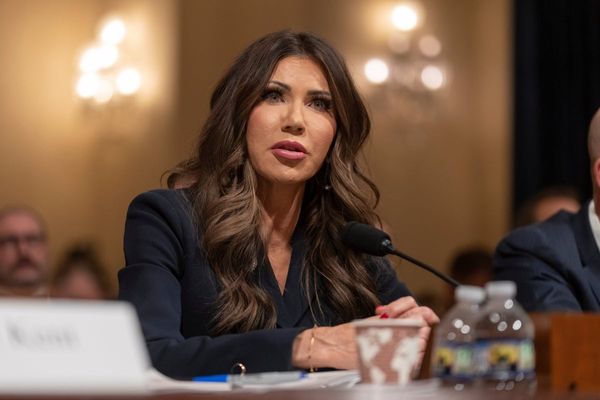
Their contract had expired, so the local teamsters, drivers of concrete-mixing barrel trucks for a firm called Glacier Northwest, in Washington state, decided to walk off the job. Like all strikes, the point of the work stoppage was to inflict financial consequences on a recalcitrant management side: to show the bosses that their employees were united in shared interest and mutual protection and that it would cost them less money to negotiate in good faith and agree to the workers’ demands than to continue to fight the union for less favorable, more exploitative conditions. When the teamsters began their strike, 16 of the barrel mixing trucks were full. They drove them back to the Glacier Northwest lot and left them there.
But if you don’t mix concrete, it hardens, and becomes useless. If this happens in a barrel truck, sometimes that can cause damage to the truck, too. When Glacier Northwest realized that their teamster employees had gone on strike, non-union workers were able to remove the concrete over the course of five hours, averting damage to the trucks. But they lost the use of all the concrete that had been mixed in those 16 barrel trucks that day.
This injury – the loss of 16 trucks’ worth of concrete to a regional construction supplier in the north-west – is the pretext that the US supreme court used this week to weaken the National Labor Relations Board and deal a blow to the right to strike.
In the case, Glacier Northwest v International Brotherhood of Teamsters, eight of the court’s nine justices found that management could sue the union for the damage caused to their property during the strike. Only Justice Jackson dissented. In addition to encouraging companies to sue their workers over strikes and ensuring that unions will pre-emptively avoid strikes or adopt less effective tactics to protect themselves from liability, the ruling also opens a wide new avenue for union-busting litigators to evade the authority of the National Labor Relations Board – the federal body that was created by Congress specifically to handle such conflicts and enforce workers’ rights.
The decision, then, furthers two of the supreme court’s major long-term projects: the erosion of labor protections, and the weakening of administrative agencies, whose expertise the court routinely ignores and whose authority the justices seem determined to usurp for themselves.
It might risk reinforcing the dramatically low standards for the supreme court’s behavior to note that the majority opinion, authored by Amy Coney Barrett, did not represent the worst of all possible outcomes. Barrett included some limiting language in her writing that preserves the possibility of binding NLRB oversight in these lawsuits. She clarified that unions do have some right to time their strikes in order to maximize financial damage to management – a move that would protect, say, the right of Amazon workers to initiate work stoppages during the holiday shipping rush, as they did last year. The gestures toward a continued right to strike appear designed to secure the votes of Elena Kagan and Sonia Sotomayor, who joined the majority, and to dilute the power of Samuel Alito, Neil Gorsuch and Clarence Thomas, who wanted to gut NLRB authority over strike-related litigation entirely.
But it is important to consider Glacier Northwest in context: in recent years, the court has made it easier for companies to bar their employees from bringing class-action lawsuits, made it harder for public-sector unions to collect dues and struck down a California law that allowed unions to recruit agricultural workers on farms. The new ruling, which finds that strikes are often illegal when they lead to damage to employers’ property, only furthers their long project of making it harder for workers to join a union, easier for employers to break one up, and more legally risky for workers to take the kinds of action that can actually elicit concessions from the boss.
It will get worse. If they get their way – a less procedurally complicated case, a more amenable vote from Roberts, Barrett or Kavanaugh – the court’s most extreme conservatives will shape a bleak future for American labor. Their aim is to all but eliminate rights to organize and strike that are enjoyed by people in the most important, foundational and meaningful part of their public lives: the workplace.
“Workers are not indentured servants, bound to continue laboring until any planned work stoppage would be as painless as possible for their master,” Jackson wrote in her dissent. But that is the labor settlement that at least three members of the extremist conservative wing hope to enact. There is only one direction that this court’s labor jurisprudence is going.
The ruling comes at a moment when the American labor movement, long dormant and defeated, is experiencing something like a small resurgence, however timid and sporadic. According to data from the Bureau of Labor Statistics, the number of unionized workers grew last year in both the public and private sectors, with the biggest increases in sectors like transportation and warehousing, arts and entertainment and durable goods manufacturing.
This growth has been accompanied by highly visible, media-savvy worker organizing drives among journalists, fast-food workers and graduate student instructors, and comes on the heels of high-profile strikes by groups ranging from Oakland teachers to Hollywood writers. Since 2021, this union resurgence has been aided in no small part by the Biden NLRB, which has been unusually hospitable to labor’s claims, even for a Democratic administration.
More and more workers are saying that they want to be a part of a union – and more and more of them are finding ways around the many and onerous obstacles designed to prevent them from forming one. Given the growing power of American unions, maybe the anti-worker court is right to be scared.
Moira Donegan is a Guardian US columnist







